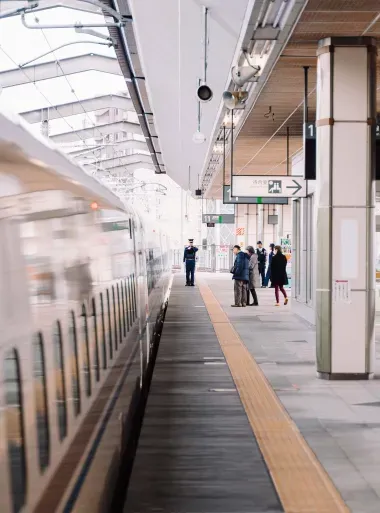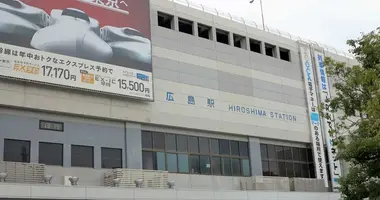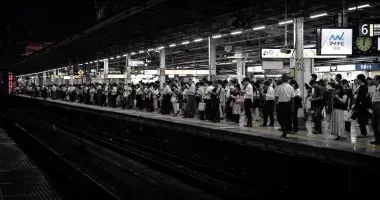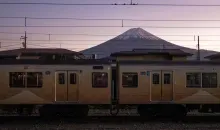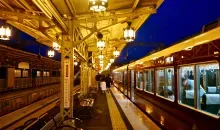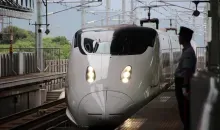Train symbols in Japan: Understanding the complex naming and numbering schemes
Japan's extensive and efficient train network can be overwhelming for visitors at first glance. The myriad train symbols, names and numbers follow specific conventions that provide key information about each service.
Familiarizing yourself with these symbols is essential for smoothly navigating the rail system and making the most of your travels in Japan, allowing for easy travel to some of the country's most lauded destinations, be it with a Japan Rail Pass or tickets to your ideal cities!
Decoding the symbols for electric trains (excluding Shinkansen)
Electric trains in Japan, apart from the Shinkansen, use a naming scheme with seven components indicating the train type, usage, electric system, classification, development order, classification number, and manufacturing number. For example, クモハE233-1070 breaks down as follows:
クモ (kumo) - motorized car with driving cab
- ハ (ha) - ordinary passenger coach
- E - train belonging to JR East, built from 1993 onwards
- 233 - Series 233
- 1070 - the 1070th car manufactured in this series
Other common symbols include モ (mo) for motorized cars without cabs, サ (sa) for non-motorized trailer cars, and specific indicators for first class "green cars" (ロ), luggage compartments (ニ), and more.
Shinkansen bullet train classification and numbering
The famous Shinkansen bullet trains follow their own five-part naming convention: classification, usage, type, classification number, and manufacturing number. Take the example of JR West series 700 car 725-7616:
- 700 - Series 700
- 725 - Car type (even numbers indicate motorized cars)
- 7616 - the 616th car of type 725 manufactured
Shinkansen series are grouped by operator, with JR Tokai, JR West, JR Kyushu using 2-3 digit numbers, while JR East uses an "E" prefix for its series like the E5 and E6. For non-passenger Shinkansen, 900 is the designated series.
Diesel train naming conventions
Diesel trains start with the キ (ki) symbol, followed by indicators for usage, engine, cab, and manufacturing number. キクハ40 2015 represents a diesel passenger car (ハ) with a driving cab (ク) and specific engine (40), manufactured 2015th in the series.
Electric and diesel locomotive identification
Japan's electric locomotives begin with the letter "E" followed by the number of powered axles (B=2, C=3, up to H=8). The class number then specifies electric system and speed, while the final digits indicate development order and specific unit number. For example, EF65-1118 is a 6-axle (F) electric locomotive capable of over 85 km/h (class 65).
Diesel locomotives follow a similar pattern but with the initial "D". DD51-1157 is a 4-axle (D) general purpose diesel locomotive (class 51) built 1157th.
Passenger and freight car classifications
Unpowered passenger cars are classified by total weight using katakana symbols: ナ (na) for 27.5-32.5t, オ (o) for 32.5-37.5t, ス (su) for 37.5-42.5t and so on. Guard's compartments are indicated by フ (fu). For example, オロ12 34 is a 32.5-37.5t first class (ロ) passenger car, 34th built in class 12.
Freight car symbols specify the type of wagon: ワ (wa) for boxcars, ト (to) for open wagons, コ (ko) for containers, etc. The load capacity is then indicated similarly to passenger cars. ワム80000 is a 14-16t (ム) boxcar numbered 80000.
Station platform markings and helpful symbols for travelers
On train station platforms in Japan, you'll see numbered markers with either circles or triangles. These indicate where specific car doors will stop, ensuring the famously punctual train services. The shape corresponds to the stopping train - check the electronic displays to line up at the right spot.
Also look out for yellow textured platform edges that help visually impaired passengers locate the platform and train doors. Many major stations also designate women-only cars during rush hours, marked with pink signs on the platform.
Tips for navigating Japan's complex train stations and making connections
Transferring between different train systems in Japan's major stations can seem daunting, but clear signage in English and other languages helps guide the way. Useful japanese train words to recognize include 出口 (deguchi) for "exit", 乗換 (noriko) for "transfer", and 改札 (kaisatsu) for "ticket gate".
When switching between above-ground and subway lines, look for color-coded signage indicating the different companies like JR Lines (green), Tokyo Metro (each line has a unique color), and Toei Subway (logos featuring the letter T).
Planning your route in advance with English-friendly apps like Google Maps, Hyperdia or the official ones for each operator can make navigating the stations a breeze. Purchasing a rechargeable IC card like Suica or Pasmo also allows seamless transferring without the need to buy separate tickets for each journey.
While the various train symbols and station layouts in Japan may seem complex at first, with a little knowledge and preparation you'll soon be traveling like a pro. Embrace the efficiency and punctuality of this world-class rail system and enjoy all Japan has to offer!

